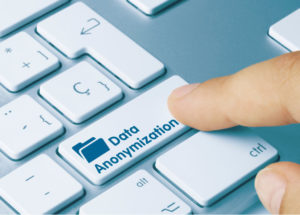
Data Anonymization
In this digital era, doing business in our globalized world is increasingly dependent on cutting-edge technology. Vast amounts of data―often sensitive and personal―are generated every day. Often needed to perform delicate paid services by fintech and healthcare vendors (and translation firms like Trusted Translations), personal data also offers marketers priceless insights into consumer preferences; thus, data protection is becoming an increasingly important factor for effective business strategies.

Data Anonymization
In this digital era, doing business in our globalized world is increasingly dependent on cutting-edge technology. Vast amounts of data―often sensitive and personal―are generated every day. Often needed to perform delicate paid services by fintech and healthcare vendors (and translation firms like Trusted Translations), personal data also offers marketers priceless insights into consumer preferences; thus, data protection is becoming an increasingly important factor for effective business strategies.
Machine Translation Related Content
Home » Services » Machine Translation » Data Anonymization
Data Anonymization: Protecting Privacy and Enhancing Consumer Offers
This is where data anonymization comes into play, protecting confidential information by removing or encrypting individual identifiers. By allowing risk-free data sharing among digital media platforms, it drives more interesting offers to consumers.
What is Data Anonymization?
When sensitive and/or personal information is stored in company databases (often associating usernames with legal names, telephone numbers, social security numbers, emails, and street addresses), there’s always a risk of leaks. Even the most secure software can be attacked by hackers through unforeseen loopholes and malicious back doors.
However, running this information through an anonymization process avoids source identification. New data protection regulations are coming into force worldwide, like the General Data Protection Regulations (GDPR) in Europe, allowing businesses to collect anonymized data without requiring individual consent. All that’s needed is to strip away the data identifiers. More recent legislation includes the LGPD in Brazil and POPI in South Africa, with similar laws enacted in some U.S. states.
Data Anonymization Techniques
There’s more than one way to anonymize data. Depending on the planned purposes and the systems that will be using this information, current de-identification technologies include:
- Pseudonymization: it replaces private identifiers with pseudonyms (like randomly changing every Miller, for example, to Baker, Cooper, Porter, or Smith), while maintaining full data integrity and accuracy, which is an ideal solution for testing and training purposes;
- Generalization: it lessens identifiability by altering details (like apartment numbers or towns), while the information still remains accurate enough for their planned purposes;
- Data scrambling: it is a widely used technique that shuffles the digits or letters in an attribute irreversibly, so the data can never be matched back to their original records;
- Data masking: it hides data through altered values in duplicate databases where modification techniques can be used, like character and word replacement, encryption, and shuffling, although unsuitable for reverse engineering;
- Data blurring: it reduces information accurately, as this approximation technique alters values just enough to minimize the chances of identification, thus ensuring individual anonymity;
- Data swaps: these alter attribute values (names, birthdates) in datasets, which then fail to match up with the original records, ensuring more effective database anonymization;
- Data encryption: it is perhaps the most effective data anonymization technique, transforming personal information into unreadable coded form that is password-protected, retrievable in its original format only by approved users.
Pros and Cons of Data Anonymization
Upside: Compliance with data security laws lets consumers feel more comfortable about sharing their personal information with companies. Following good data management principles (which obviously vary by industry and country) helps businesses avoid negative headlines that tarnish their reputations and shrink their profit margins.
Downside: When data is gathered without personal identifiers, its marketing value plummets. By offering fewer meaningful insights into customer preferences, it imposes constraints on personalized communications. While preventing disastrous data breaches by outside hackers, anonymized data makes it easier to pinpoint in-house culprits. This is because only authorized staffers can access sensitive data through time-logged secure logins and passwords.
Data Anonymization for Translations
At Trusted Translations, much of our work requires handling highly sensitive information: personal, financial, and health-related, among many other aspects. That’s why data anonymization is among Trusted Translations’ document management services, ensuring compliance and peace of mind for all our clients.













